Africa
- It is the second largest continent.
- All the three lines that are the Equator, Tropic of Cancer, and Tropic of Capricorn pass through this.
- Most of its part lies in the Northern Hemisphere.
- The Great Sahara Desert of the World is present here.
- The longest river in the world is also present here.
- 54 countries are here along with nine dependent territories which can be seen in the map.
- Around 15% of the total population of the world live here.
- Algeria is the largest and Seychelles is the smallest country here.
- The famous and second-largest lake in the world i.e. Lake Victoria is also part of this continent
- Has 10 Island countries
Africa entices most adventurous travelers with its diverse safari expeditions and breathtaking desert landscapes, but it is also gradually gaining recognition for its impressive historical sites
Africa is one of the most beautiful and fascinating places on the planet. This huge landmass is home to 57 counties and 144 UNESCO World Heritage Sites.
Africa is home to one of the New World’s Seven Wonders and a number of UNESCO World Heritage sites, as well as some of the world’s most historically significant sites.
The Great Pyramid of Africa
Pyramids of Giza
The Giza pyramids are one of Africa’s best-known monuments. Visitors from all over the world go to Egypt every year just to see the pyramids. They are a testament to the grandeur of a civilization long gone. Africa has another set of pyramids not far from Egypt. Just across the border are the Kush pyramids, a testimonial to another great civilization, the Nubians.
Pyramids of Giza
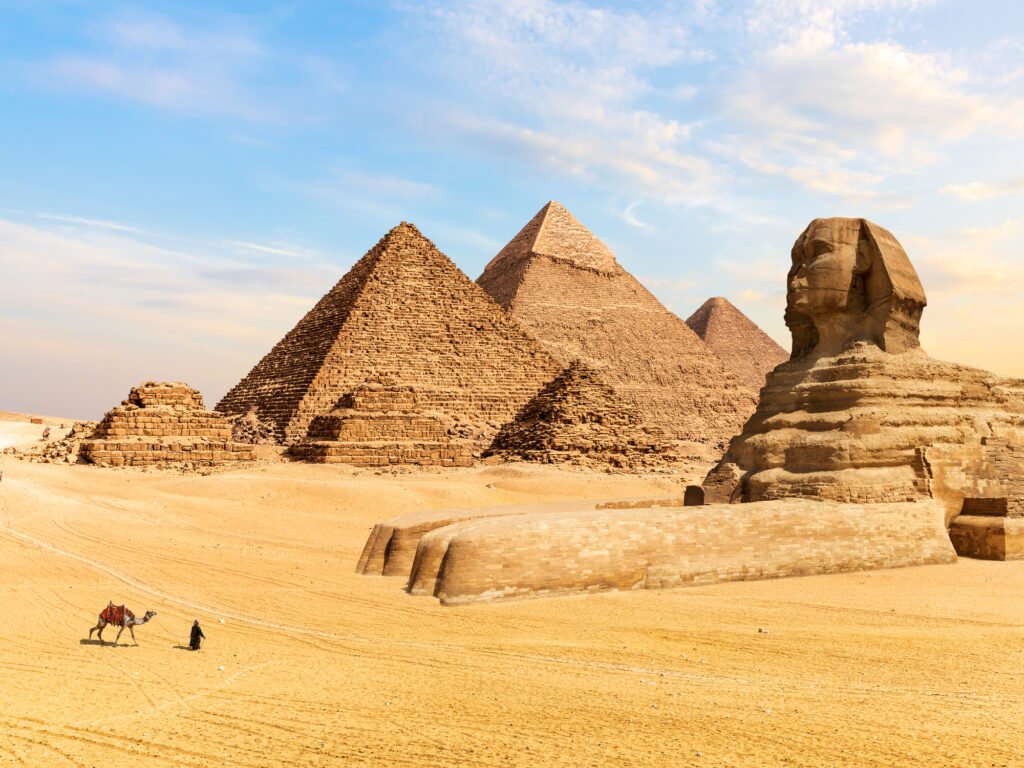
The pyramids of Giza, located in Egypt, are what comes to mind when you think of “Africa” and “pyramids.” The Great Pyramid, the largest of the three, is over 480 feet tall and covers an area of more than 13 acres. The pyramids were built around the year 2500 BC and were originally covered in limestone and possibly in black onyx. The onyx is long gone and the limestone was removed in the year 1356 AD to be used in the construction of nearby mosques. The Giza pyramids are mostly solid, with just two passages to move in and down into the pyramid, as well as a few chambers and galleries.
Nubian Pyramids(Kush Pyramids), Meroe, Sudan
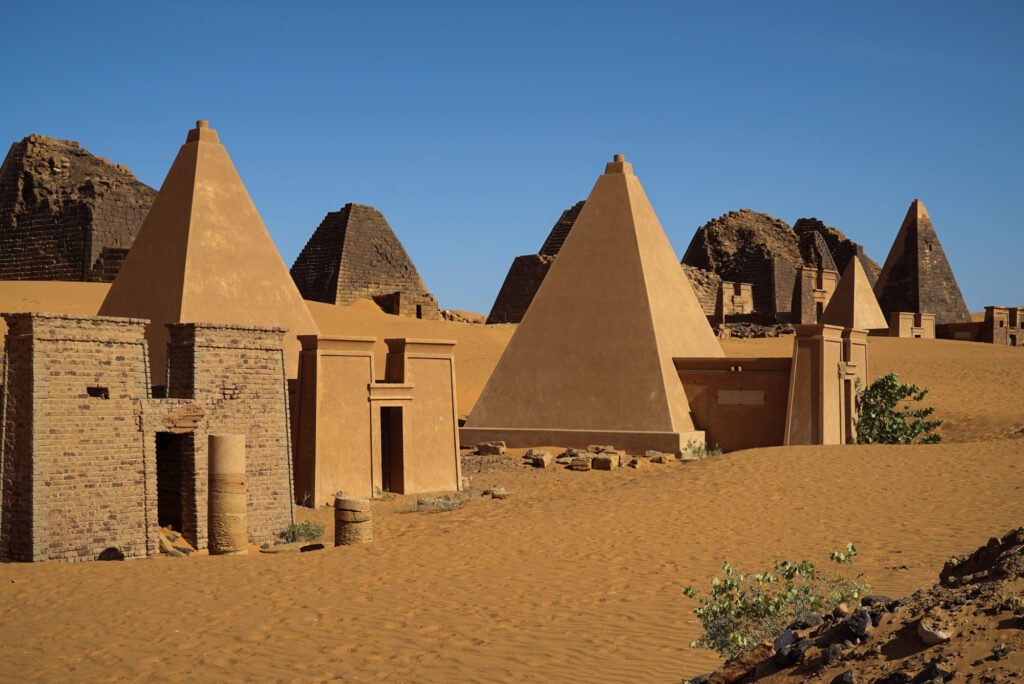
Sudan may not feature on many people’s list of ‘must visit destinations’ but the country is home to some of the most welcoming people in the world and actually boasts more pyramids than its famous northern neighbor.
The Kush pyramids are best known as “the other” African pyramids. The Kingdom of Kush was located in what is now Sudan. Kush was under the ruling of Nubian kings, who built 223 pyramids in the area. At first view, the pyramids are smaller and less impressive than their Egyptian neighbors. This is only because the pyramids have large underground chambers, all of which are impressive and richly decorated. Most of the pyramids were built around the 4th century BC.
Top Amazing Castles in Africa
1. Elmina Castle, Ghana
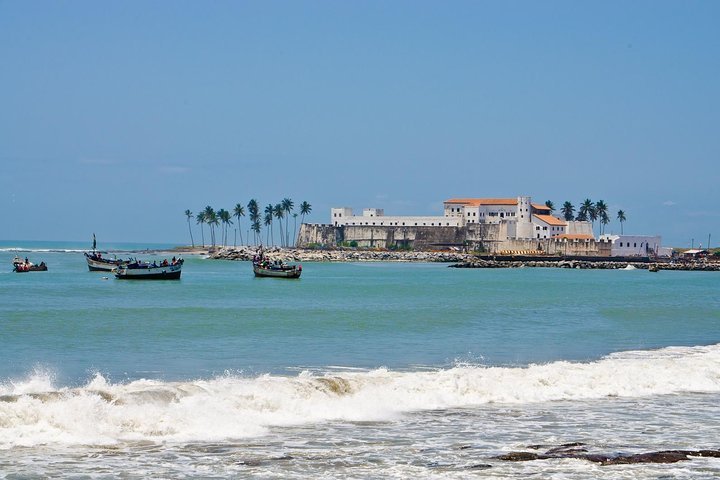
Elmina Castle was erected by the Portuguese in 1482 as Castelo de São Jorge da Mina (St. George of the Mine Castle), also known as Castelo da Mina or simply Mina (or Feitoria da Mina), in present-day Elmina, Ghana (formerly the Gold Coast). It was the first trading post built on the Gulf of Guinea, and the oldest European building in existence south of the Sahara. First established as a trade settlement, the castle later became one of the most important stops on the route of the Atlantic slave trade. The Dutch seized the fort from the Portuguese in 1637, after an unsuccessful attempt to the same extent in 1596, and took over all of the Portuguese Gold Coast in 1642. The slave trade continued under the Dutch until 1814. In 1872, the Dutch Gold Coast, including the fort, became a possession of Great Britain.
Virtual Tour of Elmina Castle
2. Citadel of Qaitbay – Alexandria, Egypt

First on our list is the Citadel of Qaitbay, located on the Mediterranean sea coast in Alexandria Egypt.
This castle was built in the 14th-century (1477 AD) by Sultan Al-Ashraf Qa’it Bay as a defensive fortress.
Named after the Egyptian sultan, it lies on the ruins of the Lighthouse of Alexandria, which overlooked the Mediterranean Sea.
The citadel today is a largely intact, and stately structure, patriotically sporting an Egyptian flag waving from its battlements.
The Citadel is situated on the eastern side of the northern tip of Pharos Island at the mouth of the Eastern Harbor.
3. Fasil Ghebbi – Gondar, Ethiopia

The Fasil Ghebbi citadel is named after Emperor Fasil or Fasilides, who commissioned and built it in the 17th century.
The castle was the seat of power in Gondar which he established as the capital of what was then Abyssinia.
The 17th-century ruins of Fasil Ghebbi are still magnificent, with its unique architecture a sight to behold in modern times.
The style of construction comprises round-shaped stone bastions walls, which gives this castle an exclusive look of ancient supremacy.
It’s a castle worth checking out!
4. Castle of Good Hope – Cape Town, South Africa

The castle of Good Hope is known locally as the Castle or Cape Town Castle. It is an internationally recognized castle and probably one of the most famous on the list.
The Cape Town Castle is very much a sought-after tourist attraction, having thousands of tourists every year. It is commonly used to hold cultural events and proceedings.
This fortress is a bastion fort built in the 17th century in Cape Town, South Africa by the Khoikhoi slaves and commissioned by the Dutch East India Company.
At first, it was originally located on the coastline of Table Bay, but after land reclamation, the fort is now located inland.
It’s probably the oldest surviving building in South Africa, and an important, albeit poignant part of Africa’s history.
5. Duwisib Castle – Lüderitz, Namibia

Duwisib Castle is a grand pseudo-medieval-looking fortress in the hills of the semi-arid Southern Namib region of Namibia, specifically 72 km southwest of Maltahöhe, Hardap Region.
This medieval castle in Lüderitz was built by a German soldier, Hansheinrich van Wolf in the early 20th century.
Hansheinrich had materials imported from Germany to what was still South West Africa, although the castle’s red sandstone bricks were quarried sourced not too far away.
It took about two years to accomplish this fort from its commission.
Credit to web nation Africa for list of the castles
Other Amazing Historical Places in Africa
Amphitheater of El Jem, Tunisia

Amphitheater of El Jem, Tunisia 
Amphitheater of El Jem, Tunisia
Built by the Romans around 238 AD, the Amphitheater of El Jem is remarkably well-preserved and bears a strong resemblance to Rome’s Colosseum. The Amphitheatre of El Jem is an oval amphitheatre in the modern-day city of El Djem, Tunisia, formerly Thysdrus in the Roman province of Africa. It is listed by UNESCO since 1979 as a World Heritage Site. Wikipedia
Address: musée, El Jem 5160, Tunisia
Hours: Open ⋅ Closes 6:30PM
Area: 1.37 ha (0.0053 sq mi)
While the amphitheater used to host gladiator fights and public spectacles, in more modern times it has featured in films such as “Gladiator” and “Monty Python’s Life of Brian”.
Lake Natron in Tanzania

Lake Natron is a lovely but deadly lake that turns animals into stone. It’s not due to some mysterious spell, according to some researchers. If we believed in their various reports, it’s merely because of the salt and the high alkaline ph in the water. The pH of the water has been measured up to 10.5 – almost as concentrated as ammonia (a colorless inorganic gas that irritates the sense organs like eyes, nose, skin, nose, etc.).
Its believed that the presence of these elements causes calcification (the accumulation of calcium salts in body tissues) when animals get in touch with the lake-water, and their bodies will turn to stone. Yet, those reports did not give clear pictures of why they turned entirely into stone.
However, some creatures manage to survive in these tricky waters. The list includes a single species of fish (Alcolapia latilabris), some algae, and a colony of flamingos that feed on the algae and breed on the shore.
Osun-Osogbo Sacred Grove in Nigeria
The second greatest unsolved mysteries in Africa is the sacred grove of Osogbo. Nestled in the dense Osogbo Forest, the Osun State of Nigeria is the sacred Osun Grove. Here you can find many ancient sculptures, shrines, and monkeys. This site is considered the home of the fertility goddess called Oshun, a Yoruba deity.
©Ancientpages – Osun-Osogbo Sacred Grove
Part of the Osun-Osogbo Sacred Grove in Nigeria
The formation of the grove is still an unsolved mysteries in Africa. Tourists are invited to always go with guides.
Lalibela, Ethiopia
Gazing upon Lalibela’s stone churches for the first time is a moment you will never forget. Famous for the rock-hewn churches, which date back to the late 12th and early 13th centuries, this is a place of twisting tunnels, elaborate architecture, and majestic courtyards.
Amphitheater of El Jem, Tunisia

Built by the Romans around 238 AD, the Amphitheater of El Jem is remarkably well-preserved and bears a strong resemblance to Rome’s Colosseum.
While the amphitheater used to host gladiator fights and public spectacles, in more modern times it has featured in films such as “Gladiator” and “Monty Python’s Life of Brian”.
Head to El Jem at either dusk or dawn to snap some mesmerizing photos!
The Seven-Colored Earth of Chamarel in Mauritius
It is a major tourist attraction found in the “Rivière Noire” district in the south-west of Mauritius. As its name suggests, it is a small area of dunes with seven different colors.
©Tourism-mauritius – The Seven-Colored Earth of Chamarel in Mauritius
It is claimed to have been formed by a volcanic eruption. An 83-meter high waterfall borders it with giant turtles!



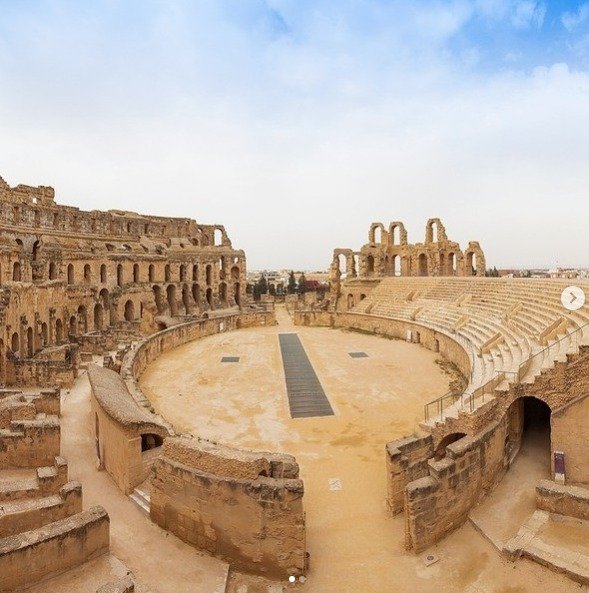

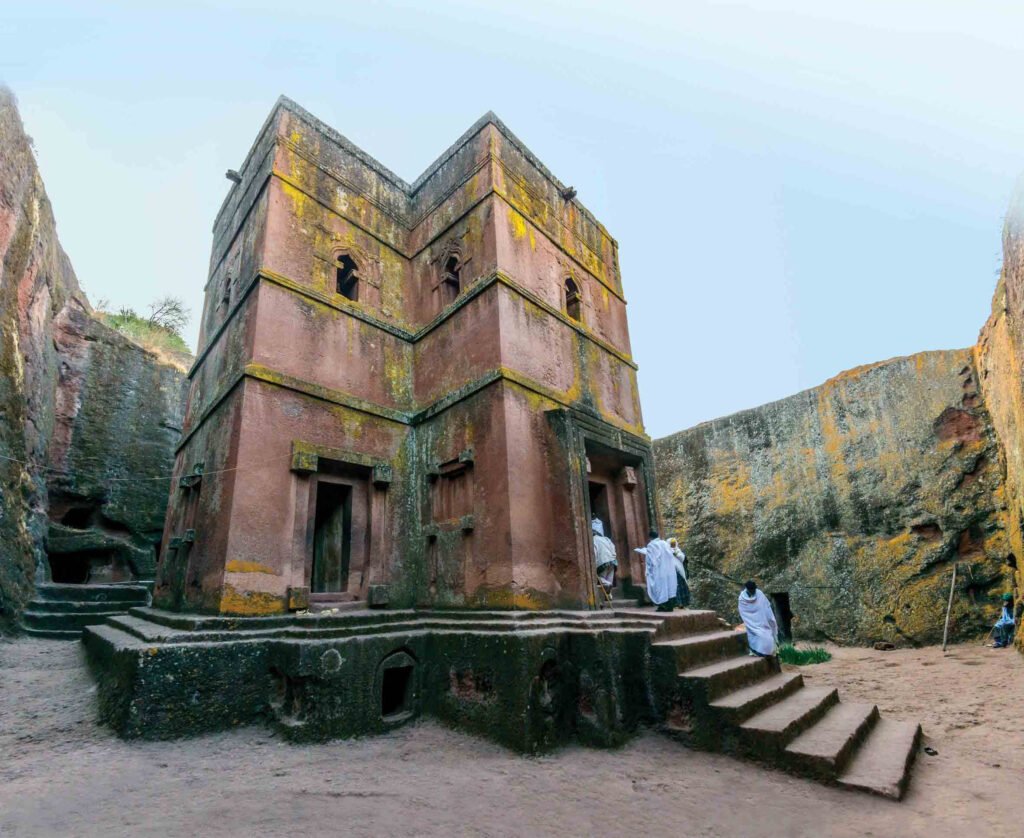
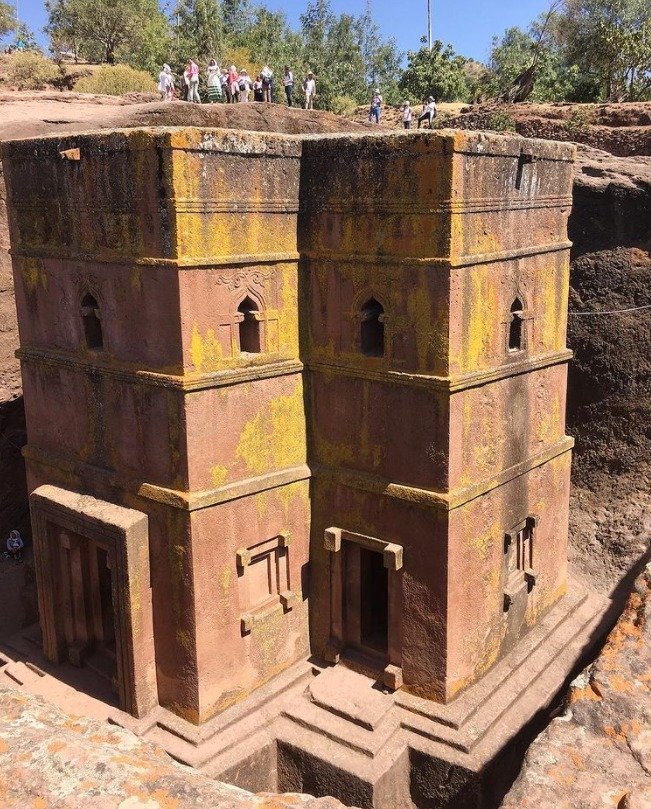



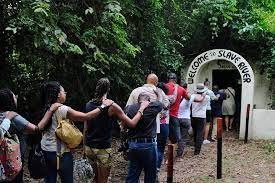

0 Comments